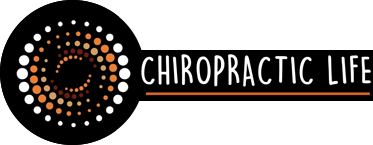Introduction

In recent years, there has been a global shift towards preventative health care. Individuals worldwide recognise the significance of proactive health measures in seeking a longer, more vital and healthier life. This trend is underpinned by a growing awareness that preventing health issues is more cost-effective and instrumental in improving overall well-being. The movement focuses on pursuing a longer and healthier life through innovative approaches like biohacking and a deeper understanding of epigenetics and the science behind living well.
A look at the stats
A closer look at global health statistics shows the increasing emphasis on preventative care. According to the World Health Organization (WHO), non-communicable diseases (NCDs) such as cardiovascular diseases, diabetes, and cancer are responsible for nearly 61% of all global deaths [1]. While this may sound alarming, it has sparked a paradigm shift, with individuals, healthcare providers, and policymakers recognising the urgent need for preventative measures to curb the prevalence of these diseases.
According to a report by the Global Wellness Institute, the wellness industry has experienced substantial growth, reaching a staggering $4.5 trillion in 2018 [2]. This figure encompasses various sectors, including preventive and personalised medicine, fitness and mind-body, nutrition, and wellness tourism. The surge in investment and interest in these sectors indicates a global appetite for preventative approaches to health.
But let’s bring that closer to home: here in Australia, we have increased our spending on wellbeing by 12%+ in the last 12 months alone [2]. We’re also rated #7 worldwide for spending per capita, in front of Norway & Denmark and have always ranked high in global health and wellness statistics [2]. Go, Aussies, go!
The rise of ‘Wellness Centres’
Wellness centres have emerged as crucial players in the global movement towards preventative care. These centres offer a holistic approach, combining traditional medical practices with alternative therapies, such as chiropractic, physiotherapy, nutrition counselling, fitness programs, and stress management. The aim is to address not only existing health issues but also to equip individuals with the tools to prevent future ailments.
Wellness centres provide tailored programs that cater to individual needs, promoting a proactive stance on health. From personalised fitness plans to mindfulness practices and nutritional guidance, these centres offer a comprehensive approach to preventative care. Integrating various disciplines fosters a collaborative environment where individuals actively engage in their health journey and take control of their health.
Australia has become a popular destination for wellness tourism, attracting visitors seeking health and wellness experiences such as fitness resorts, spas, and mindfulness retreats. The Australian government has taken steps to promote the establishment and growth of wellness-related businesses, including wellness centres, by promoting initiatives via campaigns, subsidies, or partnerships that encourage the growth of this sector [3].
Where did the preventative care health trend come from, and where is it going?
The COVID-19 pandemic that swept the world in 2020 was a crude wake-up call to take one’s health seriously and ensure a healthy lifestyle to lower your risk of negative health outcomes. Since the pandemic, the world has taken a closer look at telomere length, ‘Blue Zones’ and epigenetics, even going so far as to embrace biohacking – all of which are concepts that gained prominence in discussions about longevity and preventative care, capturing the imagination of health enthusiasts and researchers alike. What are these, you ask? Let’s take a look:
Telomere Therapy
One emerging area in the longevity trend is an anti-aging Telemore treatment, with claims of repairing telomeres and marketed as a potential ‘fountain of youth’.
Telomeres are protective structures at the ends of chromosomes, consisting of repeated DNA sequences and associated proteins. They play a crucial role in maintaining the stability and integrity of the genetic material during cell division. With each cell division, telomeres naturally shorten, contributing to aging, eventually reaching a point where they become critically short. When this happens, cells may undergo senescence (a state of dormancy) or apoptosis (cell death) [4].
The connection between telomere length and longevity is an area of active research.
Longer telomeres are associated with increased lifespan and may be influenced by genetics, lifestyle, and environmental factors [4]. Regular exercise, a healthy diet, and stress management may support longer telomeres.
A recent study shows how correcting cervical lordosis and forward head posture via chiropractic care was temporally associated with lengthened telomeres, improved neck and mid-back pain, quality of life and autonomic nervous system adaptability [5]. While telomeres play a role in cellular ageing, their direct impact on overall longevity is complex and subject to ongoing research.
Blue Zones
Blue Zones are regions worldwide where people consistently live longer, healthier lives. These areas, identified by National Geographic Fellow and longevity researcher Dan Buettner, include regions such as Okinawa (Japan), Sardinia (Italy), Nicoya (Costa Rica), Icaria (Greece), and Loma Linda (California, USA) [6].
So what sets these Blue Zones apart? While genetics may play a role, lifestyle factors emerge as crucial contributors to longevity. Residents of Blue Zones often share common characteristics such as plant-based diets, strong social connections, regular physical activity, and a sense of purpose [6]. Studying these communities provides valuable insights into the impact of lifestyle choices on health and longevity, influencing and contributing to the global trend towards preventative care.
Epigenetics
Adding a deeper layer to the narrative is the field of epigenetics. Bruce Lipton, a cell biologist and author, has popularised the concept of epigenetics in a way that emphasises the role of environmental influences on gene expression. In Lipton’s words:
“Epigenetics is the science of how environmental signals select, modify, and regulate gene activity. Our beliefs, thoughts, and perceptions act as signals that influence our cells. By changing our perceptions, we can influence the chemistry within our bodies and thus modify our genetic expression. Epigenetics empowers us to understand that we are not victims of our genes but rather masters of our genetic destiny.” [7]
Lipton’s perspective underscores the idea that our thoughts, emotions, and environment can influence how our genes are expressed, providing a more optimistic view of our ability to shape our health and well-being. Understanding this intricate connection empowers individuals to make informed decisions, acknowledging their role in shaping their genetic predispositions.
Biohacking
In parallel with traditional approaches, biohacking has emerged as a contemporary practice to optimise human performance and health. Biohackers explore a range of interventions, from nutrient optimisation, ice baths and intermittent fasting to wearable technology and personalised health monitoring. The biohacking community embraces the idea that individuals can actively shape their health outcomes, aligning with the global trend towards a more proactive stance on well-being.
Conclusion
The global trend towards preventative care is evolving to encompass a diverse array of approaches. From the rise of wellness centres that foster a holistic view of health to the exploration of Blue Zones offering real-world examples of longevity, society is redefining its approach to well-being. Biohacking introduces a dynamic element, encouraging individuals to leverage technological advancements and self-experimentation to pursue optimal health. With the insights of telomere length and epigenetics allowing individuals to acknowledge the intricate dance between genetics and lifestyle choices, the narrative changes from ‘life is happening to me’ to ‘I am in control of my life’. In navigating this tapestry of longevity, the world is embracing a future where preventative care is not merely a response to illness but a proactive and empowering journey towards a more vital and healthier life.
Chiropractic Life’s Commitment
At Chiropractic Life, we deliver on our commitment to holistic wellness by offering neurostructural corrective chiropractic at our practices across Australia and New Zealand. Our approach focuses on correcting and realigning the spine and posture. This enables the nervous system to be free from interference and the brain to receive feedback from the spine and deliver the right information to the body through optimum brain-to-body communication.
Explore www.chiropracticlife.com.au/locations to find a convenient location near you.
Optimise your brain-to-body connections today with Chiropractic Life.
References:
[1] World Health Statistics 2023: Monitoring health for the SDGs, sustainable development goals, https://www.who.int/publications/i/item/9789240074323
[2] The Global Wellness Economy: Country Rankings Data for 2019-2022, https://globalwellnessinstitute.org/industry-research/2024-the-global-wellness-economy-country-rankings/
[3] Wellness Tourism Initiative 2022 Global Survey Highlights, https://globalwellnessinstitute.org/global-wellness-institute-blog/2022/11/14/wellness-tourism-initiative-2022-global-survey-highlights/
[4] Shammas MA. Telomeres, lifestyle, cancer, and ageing. Curr Opin Clin Nutr Metab Care. 2011 Jan;14(1):28-34. doi: 10.1097/MCO.0b013e32834121b1. PMID: 21102320; PMCID: PMC3370421. Accessed here: https://www.ncbi.nlm.nih.gov/pmc/articles/PMC3370421/#:~:text=Telomere%20length%20shortens%20with%20age,and%20lifespan%20of%20an%20individual.
[5] Fedorchuk, C., Lightstone, D., McCoy, M., & Harrison, D.: Increased Telomere Length and Improvements in Dysautonomia, Quality of Life, and Neck and Back Pain Following Correction of Sagittal Cervical Alignment Using Chiropractic BioPhysics® Technique: a Case Study. (2017) Journal of Molecular and Genetic Medicine, accessed here: https://www.researchgate.net/publication/318497848_Increased_Telomere_Length_and_Improvements_in_Dysautonomia_Quality_of_Life_and_Neck_and_Back_Pain_Following_Correction_of_Sagittal_Cervical_Alignment_Using_Chiropractic_BioPhysicsR_Technique_a_Case_St
[6] History of Blue Zones, https://www.bluezones.com/about/history/
[7] Gustafson C. Bruce Lipton, PhD: The Jump From Cell Culture to Consciousness. Integr Med (Encinitas). 2017 Dec;16(6):44-50. PMID: 30936816; PMCID: PMC6438088. Accessed here: https://www.ncbi.nlm.nih.gov/pmc/articles/PMC6438088/

Recent Comments